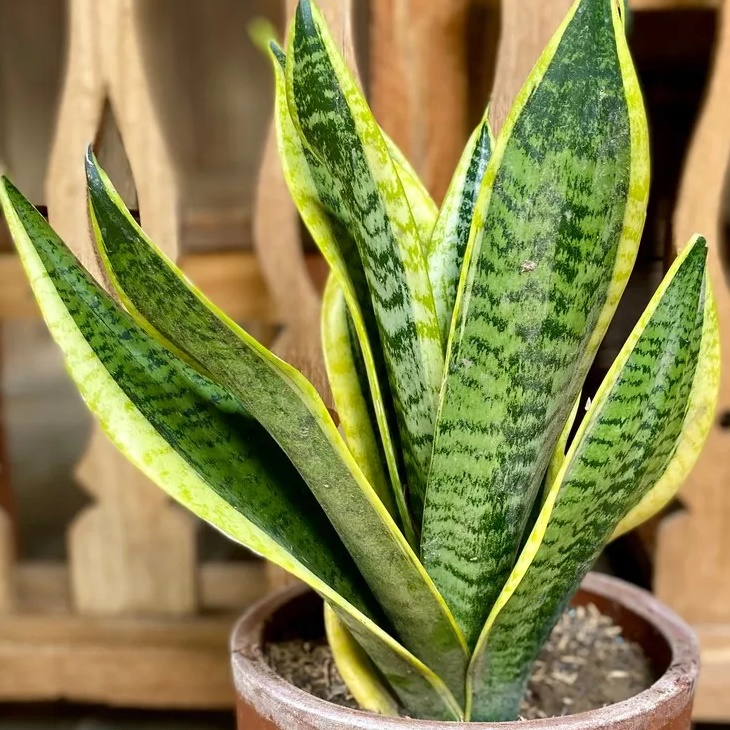The goal is to have the biggest, tallest, stunning snake plant towering and beautifying your home with its upright, sword-like foliage that appears in a rosette-like arrangement. However, how can you make your snake plants grow taller and straight?
This hardy plant can tolerate a lot of neglect and still look aesthetically appealing. However, sometimes, you may find your snake plants leaning or growing shorter, leaving you wondering what the issue could be.
There are a plethora of reasons behind your snake plants not growing as tall and straight. Once you identify them, you can fix the issue. Check this problem’s causes and practical tips on how to encourage their vertical growth below.
Why Is My Snake Plant Not Growing Taller And Straight?
Do not assume your snake plant is unhealthy just because it is a bit shorter or crooked. There are many reasons that could make this low-maintenance plant not grow taller and straight. You can easily rectify some of these issues, but others will need much effort from you.
So what are these causes?
1. Inadequate Light
Your snake plant requires sufficient indirect, bright light to thrive. So, if it is not receiving enough light for one reason or another, perhaps you placed it in a dark room, it may not grow properly. You may see its leaves drooping or growing crookedly.
Your snake plant will also favor the side that receives more light if you place it in an area with uneven lighting.
2. Overwatering or Underwatering
Overwatering can lead to root rot while underwatering can stress the plant and stunt its growth. If you overwater your snake plants, their leaves can turn yellow, starting with the lower ones.
On the other hand, the plant will grow generally slowly and develop brown leaf tips, and the leaves will wilt or droop if you underwater it.
3. Poor Soil Drainage
Compacted soil, or one that retains too much moisture, can affect the plant’s health, including keeping it from growing tall and straight. This is because such soil has poor drainage and can cause root rot.
Related Posts:
4. Pot Size
Your snake plant pot shouldn’t be excessively small or large. A huge container can hold excess moisture, leading to root rot. On the other hand, your snake plant will eventually lean towards the side with less resistance, giving it a crooked appearance if you grow it in a small pot.
5. Temperature and Humidity
Snake plants may be drought-tolerant, but excessively high or low temperatures are not good for them. So, exposing them to extreme cold or hot temperatures can impair their growth. They also tolerate low humidity but may grow slower in arid conditions.
6. Over-fertilization
Snake plants are not heavy feeders. Over-fertilizing can cause the plant to divert energy away from growth, keeping it from growing taller and straight.
Read more: Why Is My Snake Plant Turning Yellow
7. Pests and Diseases
Pests like mealybugs, spider mites, or scale insects can weaken a snake plant. Therefore, examine your plant regularly to ensure it is not infested.
8. Root Bound
As your snake plant grows, it develops an intricate root system that will eventually fill the pot. If this happens, it can restrict growth.
9. Stress or Shock
Ultimately, you must transfer your snake plant from its current pot to a bigger one. What you may not know is that repotting can cause temporary stress and slow down the plant’s growth, so give the plant time to adjust.
10. Genetics
Your snake plant may be shorter and more compact simply because of its genetics. Varieties of the snake plant that are small and compact include Sansevieria trifasciata ‘Hahnii’ , Sansevieria trifasciata ‘Futura Superba’, and Sansevieria trifasciata ‘Boncel’.
Taller and more upright varieties include Sansevieria trifasciata ‘Laurentii’, Sansevieria trifasciata ‘Black Coral’, and Sansevieria trifasciata ‘Black Gold’. Have realistic expectations per the specific variety of snake plant you have.
How To Make Snake Plants Grow Taller And Straight
The height and upright growth of a snake plant isn’t the only appealing factor of this majestic plant; nonetheless, it contributes to the overall aesthetics of this plant. Therefore, the tips below will help you grow taller and straight snake plants.
a) Pick The Right Pot and Soil
Give your snake plants enough room to grow by ensuring the pots they grow in are big enough to accommodate their expanding root system. When you notice the plant outgrowing its container or the roots circling the pot’s edges, it’s time to transfer it to a larger container with well-draining, fresh soil.
Repotting every 2-3 years is generally sufficient. Also, ensure the potting mix is well-draining and preferably designed for succulents or cacti.
b) Adopt Proper Watering Practices
Overwatering is the snake plant’s Achilles heel, causing many problems, including growing shorter and weaker. So, how do you ensure you don’t water your snake plant excessively or scarcely? Sparingly water it.
Typically, once every two to six weeks is sufficient, depending on the pot size, humidity levels, and environmental conditions. Also, check the soil’s moisture level before watering.
c) Be Mindful About Light
Just because snake plants can tolerate low light conditions doesn’t mean they prefer living this way. Their sweet spot is places with indirect to moderate light conditions. Position your snake plant close to a window that receives filtered sunlight.
Ensure this area receives a few hours of indirect sunlight each day, and don’t expose your snake plants to harsh, direct sunlight to avoid scorching the leaves.
Moreover, ensure the temperatures do not go beyond 85 degrees. Your snake plant will seek out light if it doesn’t get enough, causing it to lean towards one place.
Counteract this problem by rotating it every couple of days to ensure all sides receive equal light. You will notice the plant growing upright once again after some time.
d) Use Support Stakes
Your snake plant may struggle to support its leaves because they are simply too heavy, causing the plant to lean towards one side. Alternatively, it may already be leaning or growing sideways because of poor lighting conditions.
Regardless of the cause, you can help your snake plant grow taller and upright by supporting it with stakes.
Pick sturdy, flexible, tall enough stakes to support your snake plant’s height. Wooden dowels or bamboo stakes work well, but they must be clean and contaminant-free so you don’t harm your plant.
Once you have your stakes, place them near the base of the plant and insert them into the potting soil at an angle to avoid piercing the roots. Next, tie the leaves to the stakes using soft, flexible ties. Don’t tie the plant too tightly to avoid damaging the leaves.
As the snake plant grows, adjust the ties and stakes accordingly to ensure it remains upright.
e) Tie The Snake Plant’s Leaves
Support stakes aren’t the only props you can use to straighten your snake plants. Tying the leaves with rubber bands or strings also works. However, do not expect instant results since it will take about three weeks to see a change.
The purpose of the rubber band or string is to prevent the leaves from leaning and instead encourage them to be upright. Do not tie your snake plant’s leaves too tight as that could harm the plant or too loose because that won’t help straighten the snake plant.
You can use materials like plant velcro straps, gardening twine, soft rubber bands, or even strips of fabric to tie the leaves. These should be gentle on the leaves and not constrict them too tightly.
Also, re-tie the leaves if the straightening efforts fail after a month.
f) Fertilize Sparingly
Use a granular slow-release fertilizer or a liquid fertilizer for succulents. Apply it sparingly during snake plants’ growing season (spring to early fall). During this period, you can fertilize approximately every 2-3 months. Reduce or eliminate fertilization during winter because it is counterproductive.
Do not fertilize your snake plants for a minimum of 6 months if you recently transplanted them into a new potting mix because the soil likely contains enough nutrients to last your plants for a while.
Remember, over-fertilizing your snake plants can lead to nutrient imbalances and may harm your plant. Also, never fertilize a dry or severely dehydrated plant, as this can damage the roots, so water the plant thoroughly a day or two before applying fertilizer.
g) Pruning
Encourage new growth by trimming any dead or yellow leaves at the base. Additionally, prune any stems that have become excessively tall and leggy to promote a more compact and upright growth habit.
Pruning also takes some leaf weight, making it easier for your snake plant to grow upright and taller.
Note
If you want tall, upright snake plants, choose large cultivars. Also, be patient while waiting for your snake plants to reach the appropriate heights since these plants are slow growers.
Conclusion
Provided you choose a tall snake plant variety and provide the proper pot, soil, light, water, and occasional maintenance, you can grow taller and straighter snake plants. With time and consistent care, your snake plant will reward you with its striking, straight stature.

Hey there, fellow plant enthusiasts! I’m Rachel, the green-thumbed writer behind Rooted In Garden. With a deep-rooted love for all things botanical, I’ve made it my mission to help you cultivate a thriving collection of houseplants. As a devoted plant parent myself, I understand the joys and challenges that come with nurturing these leafy wonders. Whether you’re a succulent aficionado, an orchid enthusiast, or simply adore all potted flora, join me on this journey as we explore the secrets to growing and caring for our beloved green companions. Together, let’s create a flourishing oasis indoors.


